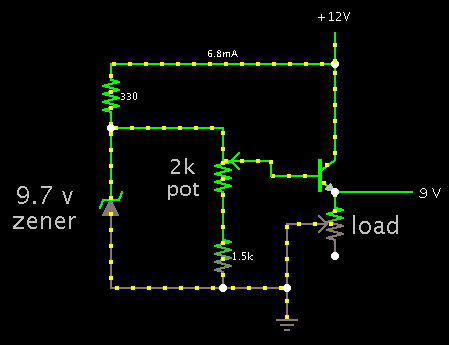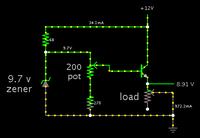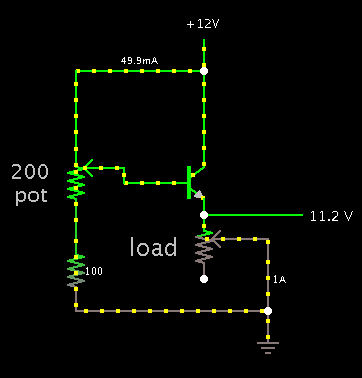- Joined
- Apr 1, 2011
- Messages
- 15,187
- Helped
- 2,900
- Reputation
- 5,812
- Reaction score
- 2,982
- Trophy points
- 1,393
- Location
- Minneapolis, Minnesota, USA
- Activity points
- 113,784
kk sir what about the other resistor's unit (330) ?????
any example of TO-220 which is common as per you ? please mention . . cause you did practically so its better to go with thatthanks
330 ohms is a suitable value... neither too high nor too low... to (a) turn on the zener diode so it will provide regulation, and (b) turn on the transistor sufficiently to power a light load at 5V.
Adjust its value accordingly, so as to avoid wasting milli-amps, and to avoid burning up either the zener or transistor.
The transistor can be a common NPN general-purpose type. Many have 'TIP' prefixes (example, TIP 31).




